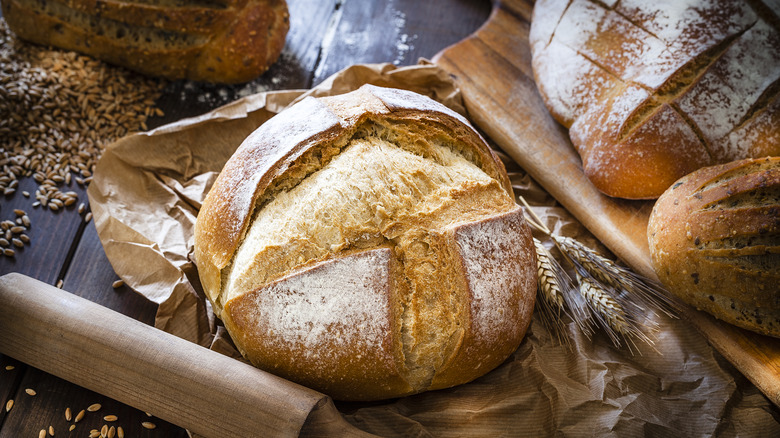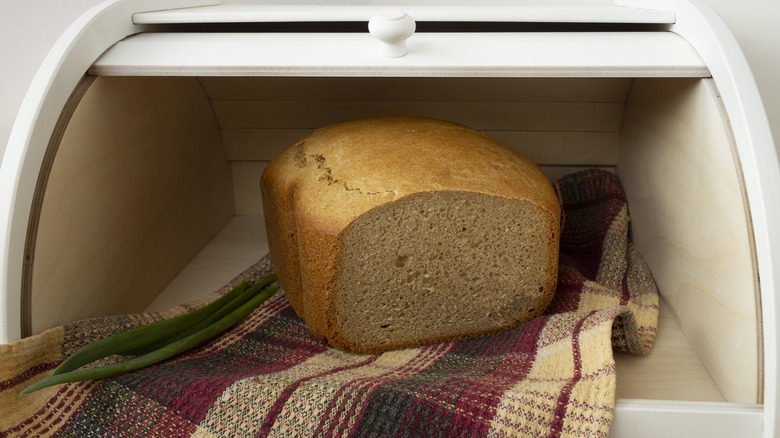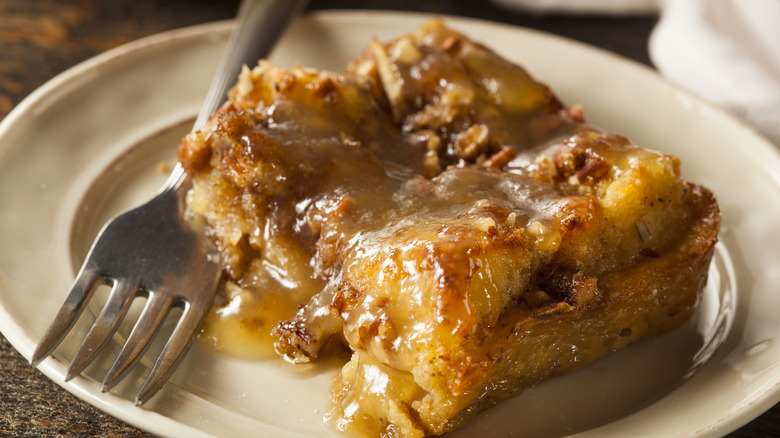The Best Way To Store Homemade Bread For Long-Lasting Freshness
If you bake bread at home, you're well-aware that your loaves don't stay fresh for as long as store-bought ones do. Commercial baked goods are often made with preservatives like calcium propionate or lactic acid bacteria, which can delay mold growth for a week or more. Without preservatives, homemade bread typically lasts only three to four days when stored at room temperature. A loaf can quickly turn too dry or stale to slice, let alone snack on. If you want to get at least a week's worth of sandwiches from the homemade loaf you put lots of love and labor into, it's time to get serious about storage.
Most of us make simple storage mistakes that ruin our favorite foods, and when there are so many types of bread you might bake — from soft sandwich bread to dense quick bread — knowing how to keep them becomes more complicated. You have to ask yourself what kind of bread you've made and how long you want to keep it. Are you working with a standard loaf or gluten-free bread? How long do you want to preserve the bread? A week? Months? The ideal storage method ultimately depends on your specific situation. Here are some tips worth trying out to extend the shelf life of homemade bread.
The best short- and long-term bread storage solutions
The longer homemade bread sits, the more stale or dry it becomes. Staling is caused by retrogradation, a process in which the bread's starches dry out and excess moisture is drawn into the crust, turning it leathery, while drying simply involves water evaporating from the loaf. Both processes lead to a rougher, tougher crumb, but proper storage can slow them down.
If you're planning to finish a loaf within a week or so, a bread box is your best bet. Designed to create the optimal environment for freshness, these nifty containers feature enough ventilation to prevent condensation from building up and causing mold growth, while also stopping the loaf from drying out. Without a bread box, wrapping a loaf in a dish towel can preserve its texture, or you could put it in a plastic bag. These options are best for softer sandwich bread, as it will unfortunately soften the crust on loaves that are meant to have a crunchy exterior.
To keep bread fresh for months, just place it in a sealable bag and pop it in the freezer. This is the best strategy for storing gluten-free bread, which tends to be more moist and prone to molding. For convenience, pre-slice the bread before freezing it then toast it before eating. You can also whole loaves at room temperature overnight or in the fridge.
What to do with leftover stale bread
If you don't manage to finish bread before it goes stale, don't throw it out. As long as the loaf isn't showing signs of spoilage (check for a sour smell or mold), there are many ways to transform it into something delicious.
For a sweet breakfast, using a stale loaf for French toast is a classic choice. The drier texture soaks up the milk-and-egg mixture better, resulting in a richer dish. While this meal is amazing when made with brioche or challah, a thick slice of any tight-crumb loaf will do. If you're craving something even richer, turn dry bread into bread pudding, another delicious custard-based dish. Both options are even better when served with fresh berries and whipped cream.
In the mood for something salty? French chef Jacques Pépin uses stale bread for savory pancakes, an alternative to French toast that also relies on the bread's dryness to soak up the liquid ingredients. Somewhat reminiscent of potato latkes, the pan-fried treats consists only of cubed pieces of bread, milk, egg, fresh herbs, and onion. A dry leftover loaf can also be turned into croutons, bread crumbs, and panzanella, an Italian bread salad. No matter which recipe you try, it's easy to use up all of your homemade bread, despite its shorter shelf life.


